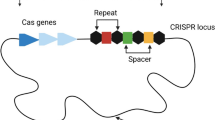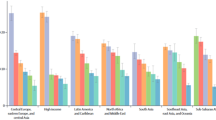Abstract
Acidophilic bacterium, Acidiphilium symbioticum H8, is resistant to high levels of several heavy metals, hydrophobic agents, and organic solvents. The ~9.6 kb plasmid pASH8, was purified, digested with HindIII, and sub-cloned in pUC19 at the respective site. Three different fragment size clones were achieved. The clones were completely sequenced and analyzed. The first clone encodes for a single putative open reading frame (ORF), which showed significant homology to several rusticyaninA1 proteins. The second clone encodes for a 43-kDa protein, which has conserved domain homology with several outer envelop TolC proteins. The clone with pASH8 tolC gene can functionally complement an Escherichia coli tolC mutant strain, making it resistant to several toxic hydrophobic agents, earlier for which it was sensitive. The tolC gene was found to be essential for imparting resistance to the clone toward these toxic hydrophobic agents. The third clone encodes for a putative 318-aa AcrA (acriflavine resistance protein A) protein and the clone was resistance to plasmid curing dye acriflavine. The clone also has a truncated ORF, which showed significant homology to cation-efflux pump AcrB. This study is the first to report a multi-drug efflux system to be encoded on a plasmid of any Acidiphilium strain.



Similar content being viewed by others
References
Altschul SF, Madden TL, Schaffer AA, Zhang J, Zhang W, Miller W, Lipman DJ (1997) Gapped BLAST and PSI-BLAST: a new generation of protein database search programs. Nucleic Acids Res 25:3389–3402
Anderson C, Koronakis E, Bokma E, Eswaran J, Humphreys D, Hughes C, Koronakis V (2002) Transition to the open state of the TolC periplasmic tunnel entrance. Proc Natl Acad Sci (USA) 99:11103–11108
Aono R, Tsukagoshi N, Yamamoto M (1998) Involvement of outer membrane protein TolC, a possible member of the mar-sox regulon, in maintenance and improvement of organic solvent tolerance of Escherichia coli K-12. J Bacteriol 180:938–944
Bhattacharya S, Chakrabarti BK, Das A, Kundu PN, Banerjee PC (1991) Acidiphilium symbioticum sp. nov., an acidophilic heterotrophic bacterium from Thiobacillus ferrooxidans cultures isolated from Indian mines. Can J Microbiol 37:78–85
Birnboim HC, Doly J (1979) A rapid alkaline procedure for screening recombinant plasmid DNA. Nucleic Acids Res 7:1513–1523
Borges-Walmsley MI, McKeegan KS, Walmsley R (2003) Structure and function of efflux pumps that confer resistance to drugs. Biochem J 376:313–338
Dopson M, Baker-Austin C, Koppineedi PR, Bond PL (2003) Growth in sulfidic mineral environments; metal resistance mechanisms in acidophilic micro-organisms. Microbiology 149:1959–1970
Hall TA (1999) BioEdit: a user-friendly biological sequence alignment editor and analysis program for Windows 95/98/NT. Nucleic Acids Symp Ser 41:95–98
Hansen LH, Johannesen E, Burmolle M, Sorensen AH, Sorensen SJ (2004) Plasmid-encoded multidrug efflux pump conferring resistance to Olaquindox in Escherichia coli. Antimicrob Agents Chemother 48:3332–3337
Koronakis V, Sharff A, Koronakis E, Luisi B, Hughes C (2000) Crystal structure of the bacterial membrane protein TolC central to multidrug efflux and protein export. Nature (London) 405:914–919
Mahapatra NR (1998) Studies on the metal resistance in acidophilic heterotrophic bacterial strains of the genus Acidiphilium. PhD thesis, Jadavpur University, India
Mahapatra NR, Banerjee PC (1996) Extreme tolerance to cadmium and high resistance to copper, nickel and zinc in different Acidiphilium strains. Lett Appl Microbiol 23:393–397
Murakami S, Nakashima R, Yamashita R, Yamaguchi A (2002) Crystal structure of bacterial multidrug efflux transporter AcrB. Nature (Landon) 419:587–593
Nies DH (2003) Efflux-mediated heavy metal resistance in prokaryotes. FEMS Microbiol Rev 27:313–339
Nies DH, Nies A, Chu L, Silver S (1989) Expression and nucleotide sequence of a plasmid-determined divalent cation efflux system from Alcaligenes eutrophus. Proc Natl Acad Sci (USA) 86:7351–7355
Nikaido H (1994) Prevention of drug access to bacterial targets: permeability barriers and efflux. Science 264:382–387
Nikaido H, Zgurskaya HI (2001) AcrAB and related multidrug efflux pumps of Escherichia coli. J Mol Microbiol Biotechnol 3:215–218
Sambrook J, Fritsch EF, Maniatis T (1989) Molecular cloning: a laboratory manual, 2nd edn. Cold Spring Harbor Laboratory Press, Cold Spring Harbor, NY
Sasaki K, Ida C, Ando A, Matsumoto N, Saiki H, Ohmura N (2003) Respiratory isozyme, two types of Rusticyanin of Acidithiobacillus ferrooxidans. Biosci Biotechnol Biochem 67:1039–1047
Singh SK, Banerjee PC (2006) High-yielding plasmid extraction method from acidophilic heterotrophic bacteria of the genus Acidiphilium. Anal Biochem 356:229–234
Singh SK, Banerjee PC (2007) Nucleotide sequence analysis of cryptic plasmid pAM5 from Acidiphilium multivorum. Plasmid 58:101–114
Surzycki S (1999) Basic techniques in molecular biology. Springer, Berlin
Thanabalu T, Koronakis E, Hughes C, Koronakis V (1998) Substrate-induced assembly of a contagious channel for protein export from E. coli: reversible bridging of an inner-membrane translocase to an outer membrane exit pore. EMBO J 17:6487–6496
Thompson JD, Higgins DG, Gibson TJ (1994) CLUSTAL W: improving the sensitivity of progressive multiple sequence alignment through sequence weighting, position-specific gap penalties and weight matrix choice. Nucleic Acids Res 22:4673–4680
Tseng T, Gratwick KS, Kollman J, Park D, Nies DH, Goffeau A, Saier MHJ (1999) The RND superfamily: an ancient, ubiquitous, and diverse family that includes human disease and development proteins. J Mol Microbiol Biotechnol 1:107–125
Acknowledgments
We express our sincere thanks to Dr. S. Roychoudhary, of Indian Institute of Chemical Biology, Kolkata for providing sequencing facilities. Council of Scientific and Industrial Research, New Delhi supported this work by awarding fellowships to SKS and AS.
Author information
Authors and Affiliations
Corresponding author
Rights and permissions
About this article
Cite this article
Singh, S.K., Singh, A. & Banerjee, P.C. Plasmid Encoded AcrAB–TolC Tripartite Multidrug-Efflux System in Acidiphilium symbioticum H8. Curr Microbiol 61, 163–168 (2010). https://doi.org/10.1007/s00284-010-9590-9
Received:
Accepted:
Published:
Issue Date:
DOI: https://doi.org/10.1007/s00284-010-9590-9




